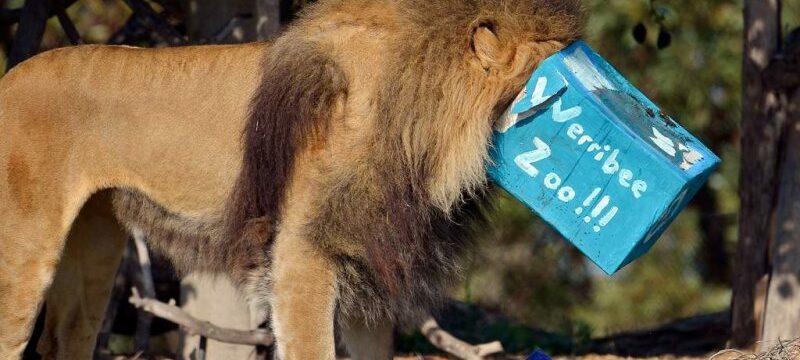Save articles for later
Add articles to your saved list and come back to them any time.
Years ago, there was a sign as you came off the Princes Freeway towards Werribee’s town centre. “Where the suburbs meet the country”, it proclaimed, amid images of friendly kookaburras and towering gums. Looking out past it, you couldn’t fault its logic: the town centre and a few nascent, neighbouring suburbs soon petered out into endless oceans of golden grass.
The name Werribee is Wathawurrung for backbone, which for me is kind of fitting. Its slowly colonised open plains turned this shy mummy’s boy into at least a loose facsimile of a man.
Back in 2003, when I was at uni and in need of money, I got a job doing graveyard shifts at a local Werribee servo. Over six long years, I came to know the many bizarre and unnerving elements of the suburb’s nocturnal population – from psycho meatheads on a steady diet of homemade speed, to chain-smoking wizards who worshipped black holes, every night was a game of halogen-lit Russian roulette.
Heroin seemed ubiquitous back then, and Werribee was consistently near the top of the list of suburbs with the most vehicle seizures under the state’s new anti-hoon laws. At high school, my best mates were from Malta, Chile and Ethiopia, and the vast empty housing tracts of dusty land made it seem like a frontier town. The more urbane residents couldn’t wait to get out, but to be honest, they were few and far between.
There’s something about Werribee that lives in you and keeps you bound to it, no matter where you roam. What held me was the beauty of its main artery, the meandering Werribee River from which the suburb gets its name.
When Mum sold up to move to the country, I wanted to stay, so I bought the house from her, a corner block that was only a short stroll to that vast, wide waterway. Every late afternoon, my rescue greyhound Katie and I would set off for a ramble, me admiring the sunset diamonds dancing on the river’s surface; Katie led up and down the rolling green banks by her vacuum cleaner of a nose.
Werribee is in many ways a confounding pastiche. Best known for its contrasting tourist attractions in the manicured Werribee Park and the wilds of its lion and giraffe-stocked Open Range Zoo, it really is a burger-with-the-lot kind of place. How many Melbourne suburbs have a beach (OK, it’s in Werribee South), a marina, an award-winning winery, a river, a racecourse, a uni campus, a 10-screen cinema and a towering 150-room Holiday Inn, along with one of Melbourne’s biggest shopping centres (OK, it’s in Hoppers Crossing)?
Yet Werribee is still thought by many to be full of country bumpkins and roving teenage gangs. It’s seen as a lower socioeconomic struggle-town existing in distant orbit of the chic inner suburbs, one mocked by people in the affluent bayside east who think their farts smell like newly opened tennis balls.
Their judgement was palpable when I was growing up. When out nightclubbing, whenever a girl asked me where I lived, I always told her Caulfield, Hampton or Brunswick. Anything but daggy old Werribee. This was mainly to avoid mention of arguably Werribee’s greatest cultural touchstone, the Werribee Sewage Treatment Plant – or as the locals have long termed it, “the shit farm”. More than a century old, it processes roughly half of Melbourne’s porcelain deposits, and for many years was apocryphally said to waft a pungent miasma over the town. Whether Werribee does actually smell or not is now redundant. Visitors and those driving through are convinced that it does, only because they’ve heard it so many times, while locals are convinced that it doesn’t (because it doesn’t).
Back in the ’90s, our Centrelink office was always chockers and Werribee Plaza was a dark and dingy affair, its two sections linked like sad little airport terminals by a long gloomy corridor. These days, the plaza is a gargantuan, light-filled cathedral of capitalism known as Pacific Werribee, with over 100,000 square metres and 300 retail stores. Sure, it’s actually in Hoppers Crossing, but its rapid growth and shining rebirth mirrors the area as a whole.
Today, Werribee and surrounds are a vibrant, burgeoning melange of older Italians and Maltese, but more and more newer residents from India, China and Africa, all finding its vast golden fields an irresistible lure for their young families. Even the mass exodus out of Victoria at the height of the COVID lockdowns couldn’t slow down Wyndham’s mushrooming population growth – Australia’s fastest-growing region over the past few years.
Nowadays, I’ve grown a full backbone. I still live here, and I’m proud to say I’m a Werribee boy to anyone who’ll listen.
David Goodwin is a freelance writer. His debut memoir, Stale Sausage Rolls, is out in 2024.
This piece is part of The Age’s Life in the ’Burbs series.
Most Viewed in National
From our partners
Source: Read Full Article
